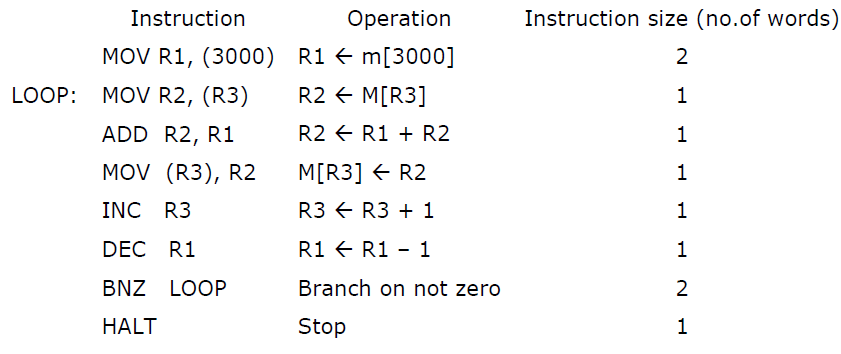Pipelining and Addressing modes
Question 11
Which of the following is/are true of the auto-increment addressing mode?
I. It is useful in creating self-relocating code.
II. If it is included in an Instruction Set Architecture,
then an additional ALU is required for effective address
calculation.
III.The amount of increment depends on the size of the data
item accessed.
Question 12
Which of the following must be true for the RFE (Return from Exception) instruction on a general purpose processor?
I. It must be a trap instruction
II. It must be a privileged instruction
III. An exception cannot be allowed to occur during
execution of an RFE instruction
Question 13
Which of the following are NOT true in a pipelined processor?
I. Bypassing can handle all RAW hazards.
II. Register renaming can eliminate all register
carried WAR hazards.
III. Control hazard penalties can be eliminated by
dynamic branch prediction.
Question 14
In an instruction execution pipeline, the earliest that the data TLB (Translation Lookaside Buffer) can be accessed is
Question 15
Consider a pipelined processor with the following four stages:
IF: Instruction Fetch ID: Instruction Decode and Operand Fetch EX: Execute WB: Write BackThe IF, ID and WB stages take one clock cycle each to complete the operation. The number of clock cycles for the EX stage dependson the instruction. The ADD and SUB instructions need 1 clock cycle and the MUL instruction needs 3 clock cycles in the EX stage. Operand forwarding is used in the pipelined processor. What is the number of clock cycles taken to complete the following sequence of instructions?
ADD R2, R1, R0 R2 <- R0 + R1 MUL R4, R3, R2 R4 <- R3 * R2 SUB R6, R5, R4 R6 <- R5 - R4
Question 16
Consider the following program segment. Here R1, R2 and R3 are the general purpose registers.
 Assume that the content of memory location 3000 is 10 and the content of the register R3 is 2000. The content of each of the memory locations from 2000 to 2010 is 100. The program is loaded from the memory location 1000. All the numbers are in decimal. Assume that the memory is word addressable. The number of memory references for accessing the data in executing the program completely is:
Assume that the content of memory location 3000 is 10 and the content of the register R3 is 2000. The content of each of the memory locations from 2000 to 2010 is 100. The program is loaded from the memory location 1000. All the numbers are in decimal. Assume that the memory is word addressable. The number of memory references for accessing the data in executing the program completely is:
 Assume that the content of memory location 3000 is 10 and the content of the register R3 is 2000. The content of each of the memory locations from 2000 to 2010 is 100. The program is loaded from the memory location 1000. All the numbers are in decimal. Assume that the memory is word addressable. The number of memory references for accessing the data in executing the program completely is:
Assume that the content of memory location 3000 is 10 and the content of the register R3 is 2000. The content of each of the memory locations from 2000 to 2010 is 100. The program is loaded from the memory location 1000. All the numbers are in decimal. Assume that the memory is word addressable. The number of memory references for accessing the data in executing the program completely is:Question 17
Consider the data given in above question. Assume that the memory is word addressable. After the execution of this program, the content of memory location 2010 is:
Question 18
Consider the data given in above questions. Assume that the memory is byte addressable and the word size is 32 bits. If an interrupt occurs during the execution of the instruction “INC R3”, what return address will be pushed on to the stack?
Question 19
A machine has a 32-bit architecture, with 1-word long instructions. It has 64 registers, each of which is 32 bits long. It needs to support 45 instructions, which have an immediate operand in addition to two register operands. Assuming that the immediate operand is an unsigned integer, the maximum value of the immediate operand is ____________.
Question 20
Consider a 6-stage instruction pipeline, where all stages are perfectly balanced. Assume that there is no cycle-time overhead of pipelining. When an application is executing on this 6-stage pipeline, the speedup achieved with respect to non-pipelined execution if 25% of the instructions incur 2 pipeline stall cycles is
There are 94 questions to complete.
Last Updated :
Take a part in the ongoing discussion